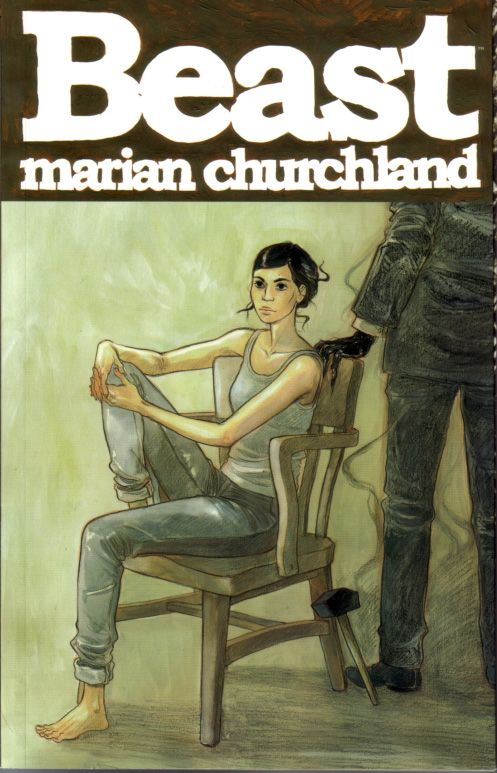In "Beast," a new 150 page graphic novel, Marian Churchland repositions the classic "Beauty and the Beast" formula as a modern deal with a slightly more lenient devil. Colette, a starving young artist with issues of her own, lands a job carving a marble statue for a beast of a boss. Beast, you see, is some kind of demonic whisper-and-smoke kind of guy who melts from the shadows and disappears back into them at will, but is never actively threatening. Colette is an artist with too many bills to pay, desperate for work. Put those two together, and it forces an interesting series of decisions that propel the story.
Little by little, we learn about Beast's back story as well as Colette's. And while there's not necessarily a romantic subplot between the two, there's something there. But there are a lot of little things working throughout the story, too, such as Colette's issues with her father, with her friends, with her ex-boyfriend, and her work, in general. She's lost on so many fronts that she's a susceptible target for a scary guy looking to hire out.
"Beast" is a slow burn, a creepy yet inspiring story, placing a mostly sympathetic character through her paces in ways that might surprise you. And, as per Churchland's essay in the back of the book, this is not a Disney fairy tale in which a handsome prince emerges from Beast and everything is sunrise and puppy dog tales, you know?
This is not destined to be a best-selling Direct Market success story. Honestly, it's much more in the vein of a smaller press, artsy audience comic. You'd almost expect this book from Top Shelf or Fantagraphics, not Image Comics. It is broken up into three chapters, but it's not a three act screenplay waiting to be adapted. It doesn't promise answers to all of your questions at the end, nor does it even give you the dramatic rise and denouement you'd want from the ending of your usual pop culture entertainment. Sit back, enjoy the ride, and absorb the environment for yourself.
Churchland's art is presented in black and white and one spot color along the way. She uses ink for her harder lines, along with what looks like pencil rubbings for textures and shadows. It's a great effect, done particularly well whenever Beast shows up, and the textures and colors change noticeably on the page. Everything is very subdued on the page. There is no forced perspective, nor any extreme poses or "camera angles." Churchland presents her story simply and clearly, with a verisimilitude that grounds the story, even in its most fantastic moments.
This book won't be for everyone, but I found it to be a wonderfully artistic and mysterious story, told well.

